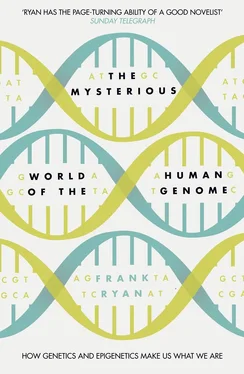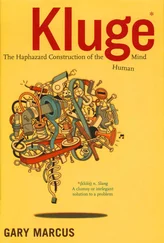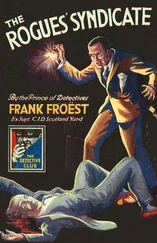
William Collins
An imprint of HarperCollins Publishers
1 London Bridge Street
London SE1 9GF
WilliamCollinsBooks.com
This eBook first published in Great Britain by William Collins in 2015.
Text © FPR-Books Ltd 2015
Diagrams by Mark Salwowski
Frank Ryan asserts his moral right to be identified as the author of this work.
A catalogue record for this book is available from the British Library.
Cover design by Jo Walker
Cover design © HarperCollins Publishers 2015
All rights reserved under International and Pan-American Copyright Conventions. By payment of the required fees, you have been granted the non-exclusive, non-transferable right to access and read the text of this e-book on-screen. No part of this text may be reproduced, transmitted, down-loaded, decompiled, reverse engineered, or stored in or introduced into any information storage and retrieval system, in any form or by any means, whether electronic or mechanical, now known or hereinafter invented, without the express written permission of HarperCollins.
Source ISBN: 9780007549061
eBook Edition © June 2015 ISBN: 9780007549078
Version: 2016-03-02
To Oswald T. Avery
Possibly I am a scientist because I was curious when I was young. I can remember being ten, eleven, twelve years old and asking, ‘Now why is that? Why do I see such a peculiar phenomenon? I would like to understand that.’
LINUS PAULING
Table of Contents
Cover
Title Page
Copyright
Dedication
Epigraph
Introduction
Chapter One: Who Could Have Guessed It?
Chapter Two: Dna Is Confirmed as the Code
Chapter Three: The Story in the Picture
Chapter Four: A Couple of Misfits
Chapter Five: The Secret of Life
Chapter Six: The Sister Molecule
Chapter Seven: The Logical Next Step
Chapter Eight: First Draft of the Human Genome
Chapter Nine: How Heredity Changes
Chapter Ten: The Advantage of Living Together
Chapter Eleven: The Viruses That Are Part of Us
Chapter Twelve: Genomic Level Evolution
Chapter Thirteen: The Master Controllers
Chapter Fourteen: Our History Preserved in Our Dna
Chapter Fifteen: Our More Distant Ancestors
Chapter Sixteen: The Great Wilderness of Prehistory
Chapter Seventeen: Our Human Relatives
Chapter Eighteen: The Fate of the Neanderthals
Chapter Nineteen: What Makes You Unique
Chapter Twenty: The Fifth Element
Bibliography
Chapter Notes
Index
Acknowledgements
By the Same Author
About the Publisher
No special act of creation, no spark of life was needed to turn dead matter into living things. The same atoms compose them both, arranged only in a different architecture.
JACOB BRONOWSKI, THE IDENTITY OF MAN
Bronowski begins his more famous book, The Ascent of Man , with the words, ‘Man is a singular creature. He has a set of gifts which make him unique among the animals: so that, unlike them, he is not a figure in the landscape – he is a shaper of the landscape.’ But why should we humans have become shapers of the landscape rather than mere figures inhabiting it? We differ from, say, a sea horse or a cheetah because our genetic inheritance, the sum of the DNA that codes for us, is different in humans when compared to the horse or the cheetah. We call this the genome, or, to be more specific in our case, the human genome.
Our genome defines us at the most profound level. That same genome is present in every one of the approximately 100,000 billion cells that make us who we are as individual members of the human species. But it runs deeper than that. In more personal terms, in myriad tiny variations that we each possess and are individual to us only, it is the very essence of us, all that, in genetic and hereditary terms, we have to contribute to our offspring, and through them to the sum total evolutionary inheritance of our species. To understand it is to know, in the most intimate sense, what it means to be human. No two people in the world today have exactly the same genome. Even identical twins, who will have been conceived with exactly the same genome, will have developed tiny differences between their genomes by the time of their births: differences that may have arisen in parts of their genomes that don’t actually code for what we normally mean by genes.
How strange to realise that there is actually more to our individual genome than genes alone. But let us put aside such details for the moment to focus on the more general theme. How could a relatively simple chemical code give rise to the complexity of a human being? How could our human genome have evolved? How does it actually work? Immediately we are confronted by mysteries.
To answer these questions we need to explore the genome’s basic structure, its operating systems and its mechanisms of expression and control. Some readers might react with incredulity. Surely any such exploration promises a journey into extraordinary complexity, one that is far too obscure and scientific for a non-scientist reader? In fact this book is aimed at exactly such a reader. As we shall see, the basic facts are easy enough to grasp, and the way to grasp them is to break the exploration into a series of simple, and eminently logical, stages. This journey will lead us through a sequence of remarkable revelations about our human history – even into the very distant past of our ancestors’ lives and their prehistoric exploration of our beautiful life-giving planet.
The exploration will raise other, equally important, questions, too. How, for example, does this extraordinary entity that we call the human genome enable our human reproduction – the fertilisation of our maternal egg with the paternal sperm? How does it control the quasi-miracle of the developing embryo within the mother’s womb? Returning to generalities for the moment, though, we can be sure that an important ingredient of the genome, and its essential nature, is memory – the memory, for example, of the totality of every individual human’s genetic inheritance. But how exactly does it perform this remarkable feat of memory? We know already that this wonder chemical we call DNA works like a code, but how could any code recall the complex instructions that go into the making of cells and tissues and organs, and then once made, bring them into function in the single coordinated whole that comprises the human being? Even then we have hardly begun to confront the mysteries of the human genome. How does this same extraordinary structure acquire the programming that gifts the growing child with the wonder of speech, that bestows the related capacity for learning, writing and education, and which makes possible the maturing of the newborn to the future adult, who then repeats the cycle all over again when he or she becomes a parent in turn?
The wonder is that all of this might be encompassed in a minuscule cluster of chemicals including, but not exclusive to, the master molecule we call deoxyribonucleic acid – or DNA. This chemical code somehow records the genetic instructions for making us. Built into that code must be the potential for individual liberty of thought and inventiveness, enabling every human artistic, mathematical and scientific creativity. It gives rise to what each of us thinks innately as our private inviolate ‘self’. Somehow that same construction of ‘self’ made possible the genius of Mozart, Picasso, Newton and Einstein. It is little wonder that we look at the repository of such potential with awe. No more is it surprising that we should want to understand this mystery that lies at the very core of our being.
Читать дальше













